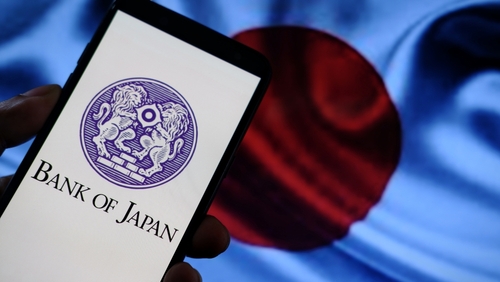

This article is only available to Macro Hive subscribers. Sign-up to receive world-class macro analysis with a daily curated newsletter, podcast, original content from award-winning researchers, cross market strategy, equity insights, trade ideas, crypto flow frameworks, academic paper summaries, explanation and analysis of market-moving events, community investor chat room, and more.
Summary
- Japan’s economy remains robust despite tariffs uncertainty, though recent trade data suggests real exports to the US have slowed.
- During his last speech, Governor Himino (median member) highlighted downside inflation risks are more prevalent now, continued require monitoring.
- We view Governor Ueda’s discussion around the BoJ’s urgency to hike as guidance towards an October hike. For now, we think information is insufficient for any guidance.
Market Implications
- We expect the BoJ to stay on hold tomorrow, with little guidance towards an October hike.
- We maintain a bearish bias on JPY. Neel and I introduced the option of a 1 month (16Oct2025) 99 AUDJPY Call Reverse Knock Out @ 102, which has mid of .28% (vs Vanilla price of .48%).
Downside Risks to Growth and Inflation Remain Despite Robust Q2 Growth
Since the July BoJ meeting, there have been three key updates.
First, the LDP is set to undergo a leadership contest on 4 October. Numerous candidates have already thrown their name in the ring, while the early frontrunners are Koizumi Shinjirō, Takaichi Sanae, and Hiyashi Yoshimasa. The leadership contest itself is not too important for the BoJ as even Takaichi will not be powerful enough to prevent the BoJ from hiking. What is important is the trajectory for fiscal policy. For instance, Takaichi has committed to lowering consumption taxes on food and gasoline, while Koizumi is more sceptical, instead favouring cash handouts. Practically, the BoJ should know of the fiscal plan by the BoJ’s meeting on 30 October.
Second, the economy remains more robust than expected. Recall, within the baseline scenario, the BoJ assume trade policies will eventually appear, leading to slower exports and declining profits. However, Q2 growth was far better than expected, driven by a combination of strong exports, consumption and corporate investment. True, most recent trade data suggests export volumes to the US are slowing, but more data is required to make any conclusive judgements.
Third, was Himino’s speech earlier this month where he emphasised the need for more time, and the importance of data points such as Q3’s Tankan survey. Within the speech, Himino provided three key insights:
- An updated framework for understanding the Trump administration’s actions. The crux of Himino’s argument is that the Trump administration is unshackled by conventional wisdom and is willing to use the US’ dominant position to achieve its strategic goals. In trade, this means improving its terms of trade by imposing moderate tariffs without fear of retaliation. He also suggests viewing tariffs from the lens of trade-only being too narrow, given the US is also concerned about national security, distributional consequences, and domestic culture. The broader objective may have consequences for Japan’s economy over time. We can interpret this consequence as Japan needing to become more self-sufficient and seek other trading partners.
- While the tariffs impact has been smaller than expected so far (as explained above), downside risks remain. Thus far, there have been two noticeable impacts. The first is that Japanese auto exporters have lowered their prices to the US. This represents a hit to corporate profit margins, though Himino thinks the corporates can do this due to the previously beneficial impacts of a weaker yen. The other is that firms have lowered their expectation of business and profit conditions. This means the BoJ needs more time to evaluate the impact these policies may have, with Himino highlighting downside risks currently warrant more attention.
- The structural change in the reaction function to inflation shocks. When discussing the outlook for prices, Himino emphasised that while headline inflation remains uncomfortably high due to mostly higher food prices, the BoJ’s estimates of underlying inflation remain below 2%. Our estimates show the same as a suite of core metrics currently suggest underlying inflation is around 1.8%, with risks skewed to the downside. Himino also importantly suggests there may be a structural shift in how the economy responds to price pressures. Specifically, Japan may be transitioning from an era where downward price shocks had strong deflationary effects to one where upward shocks have a broader impact due to factors like labour shortages, changed corporate pricing attitudes, and rising inflation expectations. Part of the reason for this is that despite the BoJ’s estimate suggesting the output gap isn’t yet positive, most firms are reporting significant constraints. Moreover, a significant segment of these industries operate in sectors where extra capital cannot bridge the gap – think services sectors such as restaurants, construction, and hotels. In these sectors, the tendency will be for wages to grow quickly, despite shocks the economy. For now, the BoJ must evaluate how the economy responds to the various shocks it faces, and requires more evidence to confirm that the effects of US tariffs are temporary.
The takeaway is that the BoJ is expected to be on hold in September, and the lack of clarity in key areas will prevent Ueda guiding towards an October hike.
As always, the press conference and Q&A will be the most important.
Last time Ueda emphasised the BoJ is not behind the curve or at risk of falling behind. Subtle changes in this language around urgency is the tell for October. We expect no change in this language given Q3’s Tankan survey is unavailable until October.
Other areas to watch are Ueda’s language around trade uncertainty. We know that a trade deal itself is insufficient to hike, but how is Ueda seeing trade effects on the economy so far? We currently assume he will fully agree with Himino’s position.
